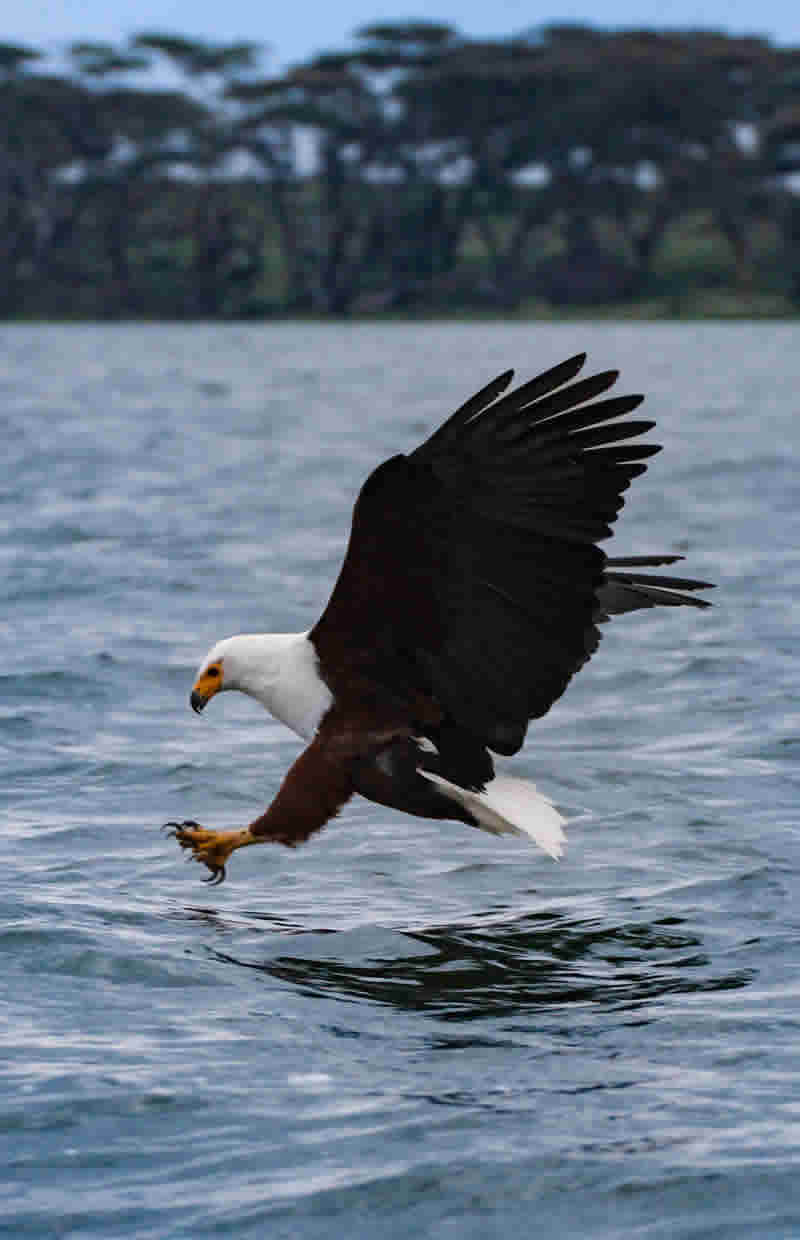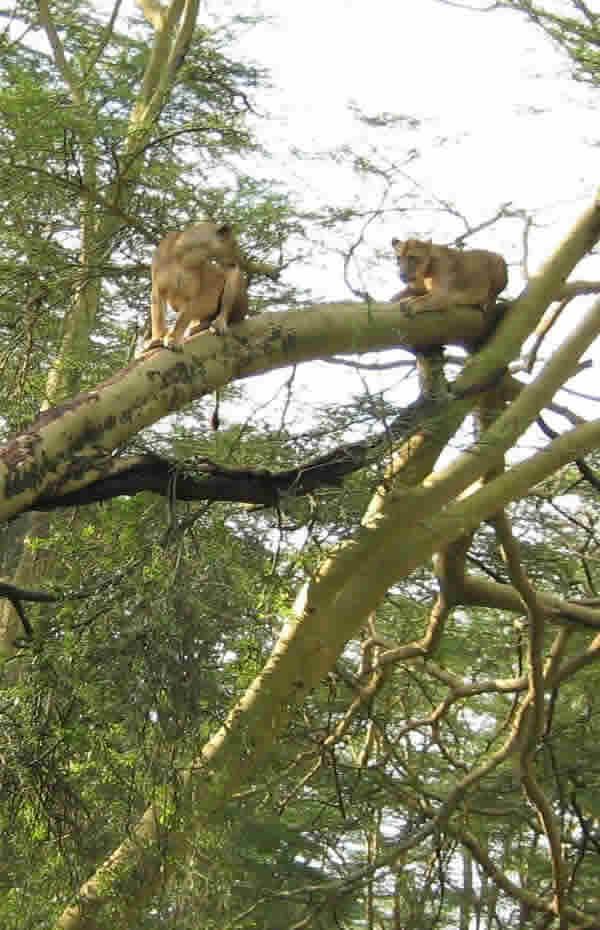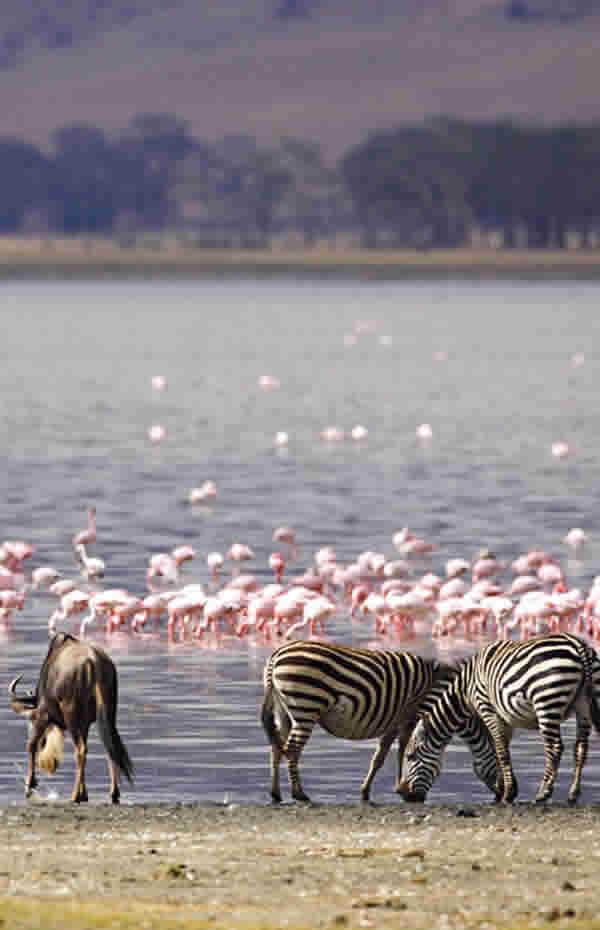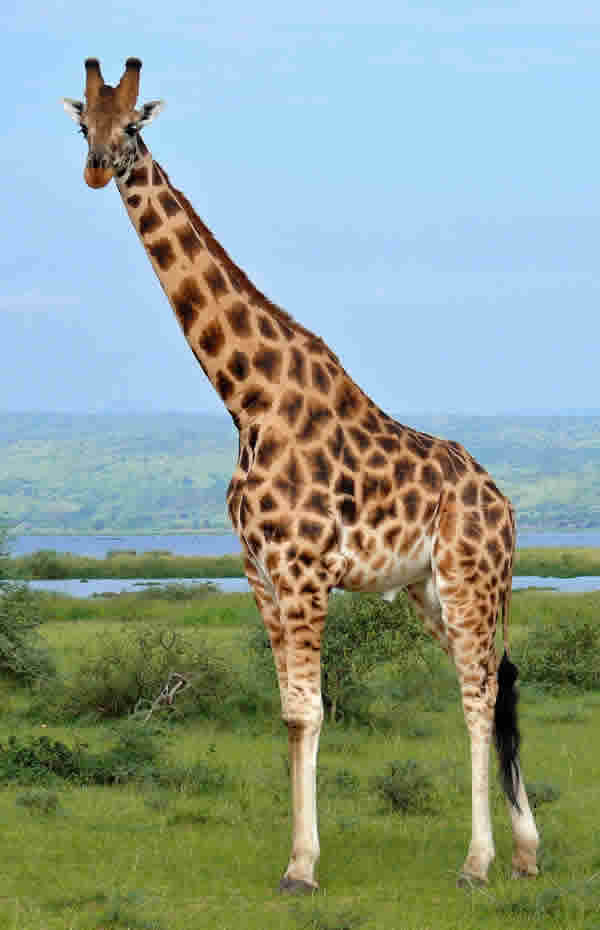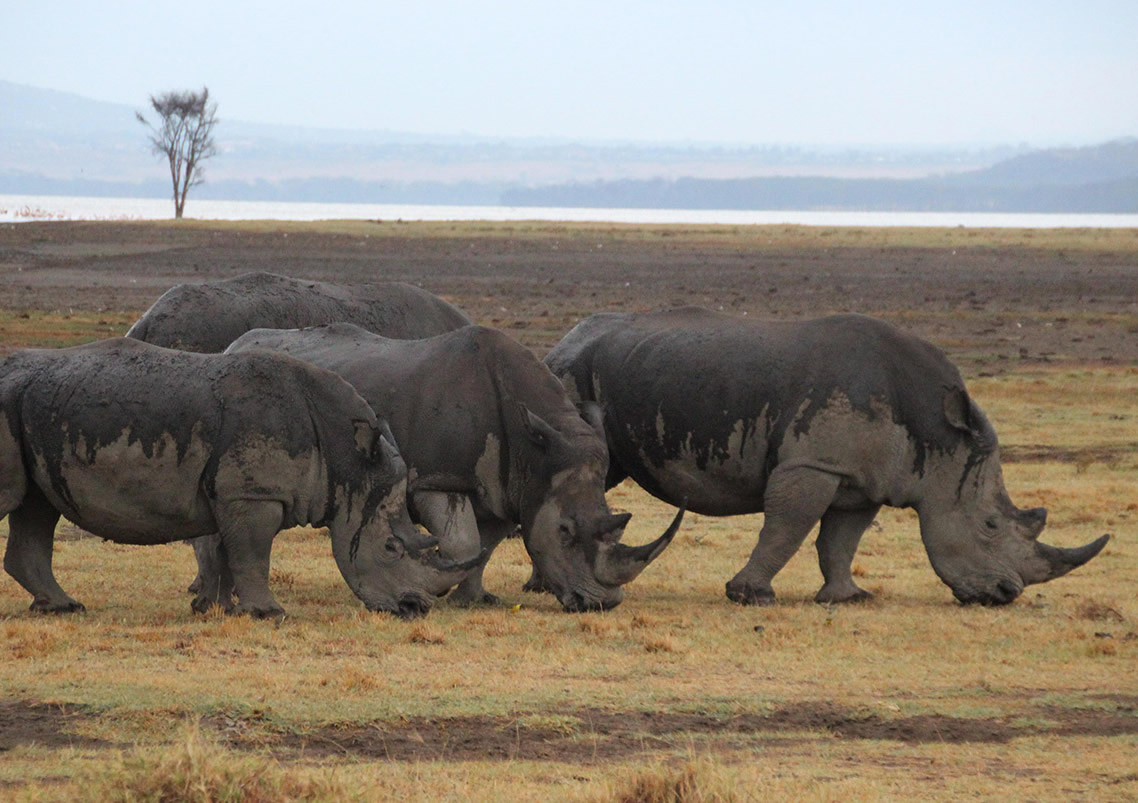
The park lies in Central Kenya, 140km north-west of Nairobi, in Nakuru district of the Rift Valley Province. The ecosystem comprises of the lake, surrounded by mainly wooded and bushy grasslands. The park supports a wide ecological diversity with Flamingos (Greater and Lesser) and other water birds being the major attractions of the area. The ecosystem provides for about 56 different species of mammals including the white rhino and buffaloes and a variety of terrestrial birds numbering nearly 450 species.
A shifting sea of pink flamingos, this is the iconic image of the Lake Nakuru National Park, a UNESCO World Heritage Site that is one of the archetypal images of the African safari.
The Lake Nakuru National Park is one of the top tourist destinations in Africa, famed for the Flamingos, both lesser and greater, that flock to its shores to feed on the cyanobacteria that live in its alkaline waters. It is a very important breeding ground and stop over for many species of birds, and has been designated a UNESCO World Heritage Site.
At some times of the year, there can be between one and two million flamingos forming a big pink band around the edge of the Lake. The Park is home to one of the greatest concentrations of Black Rhino in the World, and also has a thriving population of White Rhino. It is also a sanctuary for the rare Rothschild Giraffe and is also one of the best places in Kenya to see Leopards.
Getting There
The Lake Nakuru National Park is situated in central Kenya about 150 km (87 miles) north-west of Nairobi in the Rift Valley Province. The vehicle will travel along the main A104 road. The main entrance gate is situated 4km (2.4miles) from Nakuru town. Tourists travelling from the Masai Mara will enter the Lake Nakuru National Park through the Nderit Gate.
Airport - The Lake Nakuru National Park is serviced by the Naishi Airstrip.
Lake Nakuru National Park Highlights and Attractions
- The main attraction is the millions of Greater and Lesser Flamingos which gather at the lake
- The Park is one of the few places in Kenya you are sure to see endangered Rhino
- Walking through the biggest Euphorbia forest in Africa
- The Lake is a RAMSAR site and has over 450 species of birds making it a great stop for birders
- 56 different species of mammals
What to do in the Lake Nakuru National Park - The main way to experience the Lake Nakuru National Park is on a game drive. This is best done in the company of an expert guide who knows their birds, as they really are the main attraction in this Park.
The Experience
Most visitors explore the park on guided game drives run by safari operators. It is one of the only parks in Kenya where you can drive up close to White Rhino and may even snap a shot of them with flocks of flamingos on the Lake in the background. Lake Nakuru is a must-see for any avid birder, not only will you witness the spectacle of up to two million Greater and Lesser Flamingos. There are also many other water birds, most notably pelicans, herons and storks that call the lake home.
The Park is one of the best places in Kenya to see Leopard and, as it is a Rhino sanctuary, this is one of the places in Kenya to see the Big Five. Leopards are elusive, so sightings are not guaranteed, but you may just come across one lounging on a branch. The Park is also a sanctuary for the rare Rothschild Giraffe.
Climate
The Lake Nakuru National Park has a moderate climate but can be hot and humid, although it does not get as hot as other parts of Kenya such as Amboseli. The area has two main wet seasons, from March to May and October to December. The rain is usually in the form of short heavy downpours in the early afternoon, otherwise the weather is generally fine.
